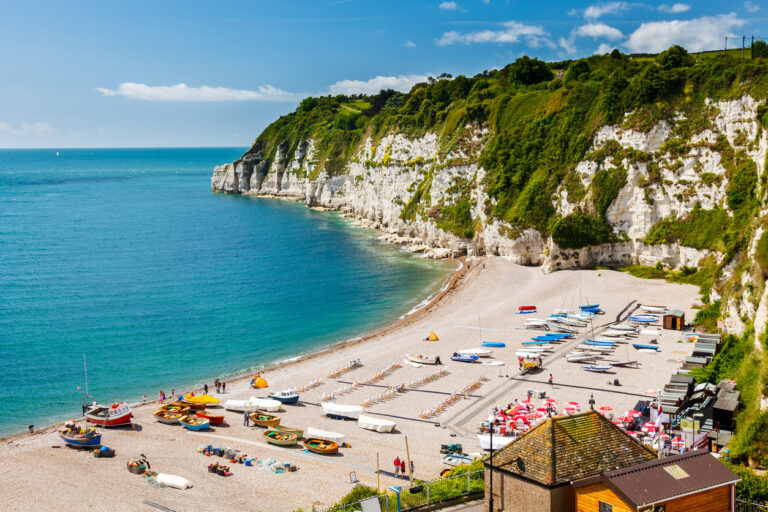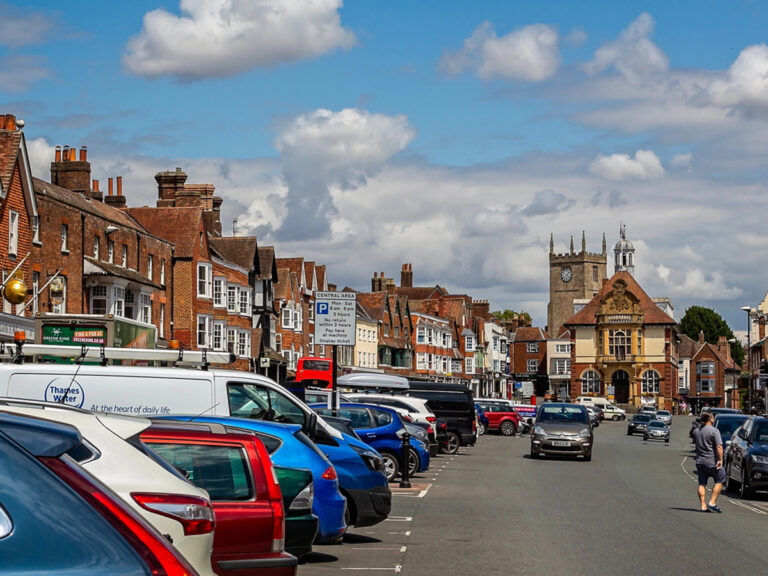How to Visit Stonehenge – England’s Prehistoric Stone Circle
If you’re wondering how to visit Stonehenge, this article will help you out! It has all the information that you might need about the UK’s mythical stone circle.
Stonehenge is one of the most famous attractions in the UK. An enigmatic prehistoric monument, these sarsen stones date back to between 3000-2000 BC.
The real mystery of the stones is that nobody really knows how they got there. The stones aren’t native to Wiltshire – they are from hundreds of miles away in Wales.
We’re also not a hundred per cent sure what they were used for, although archaeologists and historians have made some good guesses.
Read on, and we’ll go into the mystery of these stones and how you can visit them for yourself!
This blog post may contain affiliate links.
About Stonehenge
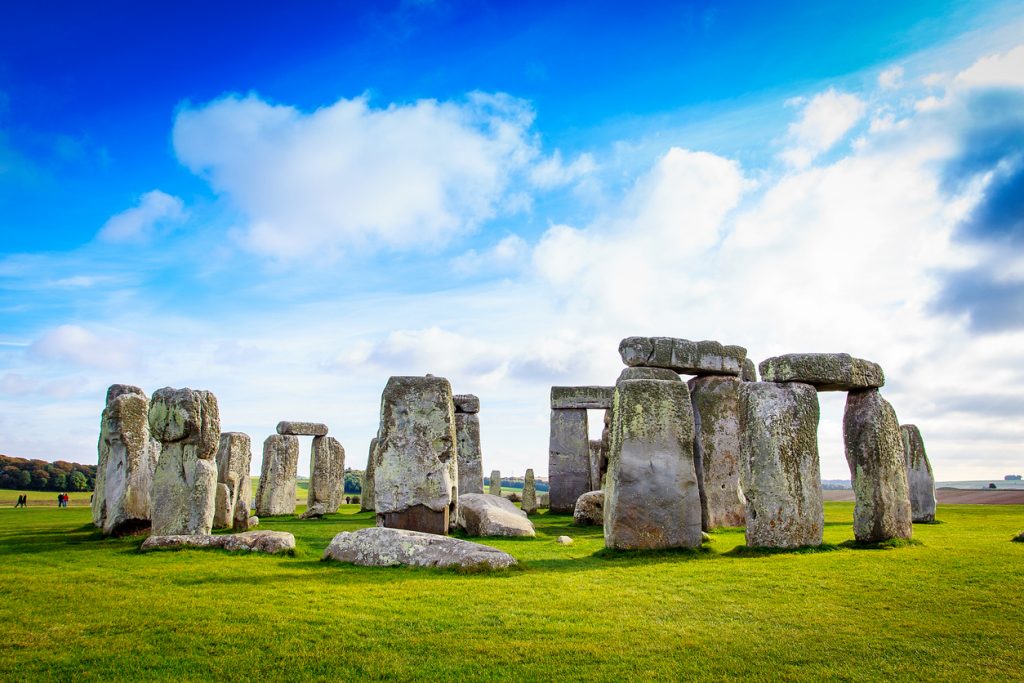
Stonehenge is a circle of stones on Salisbury Plain in Wiltshire. It is made up of two rings of stones, with some free-standing rocks in the middle.
It stands in one of the most important areas for Neolithic and Bronze Age monuments in England and is surrounded by burial mounds.
Stonehenge has been a protected scheduled ancient monument since the protection was introduced in 1882.
It has also been a UNESCO World Heritage Site since 1986.
When was Stonehenge built?
Nobody’s sure exactly, but it’s believed that Stonehenge was built from 3000 to 2000 BC – so four to five thousand years ago.
Why was Stonehenge built?
As you’d expect, we don’t know a huge amount about the people who roamed the country during this time!
There have been lots of different theories as to why Stonehenge was built, and to be honest, nobody’s 100% sure.
However, there are a few plausible theories.
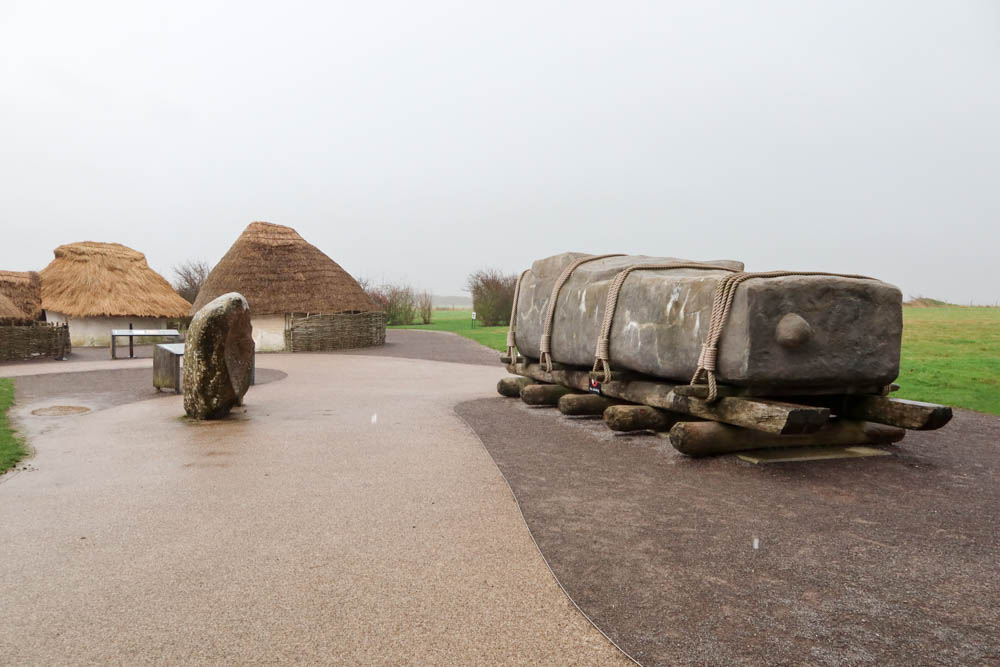
Late Neolithic Burial Site
Perhaps the most logical theory (especially given that it is surrounded by burial mounds and human remains have been found here) is that Stonehenge was a late Neolithic burial site.
Some people argue that it could have been a burial site when it was first constructed (it would have taken a long time to cart all of this stone from Wales!), but its purpose changed after it was built.
The human remains appear to be from Wales, which is also where the rocks were found.
Astronomical Calendar
Some people think that the circle of stones is a giant astronomical calendar.
The unique pattern of rocks could have been built to track the sun and calculate the days.
In a world without Google, this could indeed be possible!
Place of pilgrimage and healing
Some experts in Stonehenge (Prof. Timothy Darvill and the late Geoff Wainwright) think that it was a place of healing.
This is because in the Neolithic era, the bluestones, which are at the centre of the circle, were thought to have healing properties.
The historians argue that only a reason like healing powers would have caused people to transport the stones all the way from southwest Wales to their position on Salisbury Plain.
Regardless of why it was built, it’s a remarkable feat, and the fact that so much of it stands today makes this truly one of the best sites to visit to understand ancient Britain.
Who was Stonehenge built by?
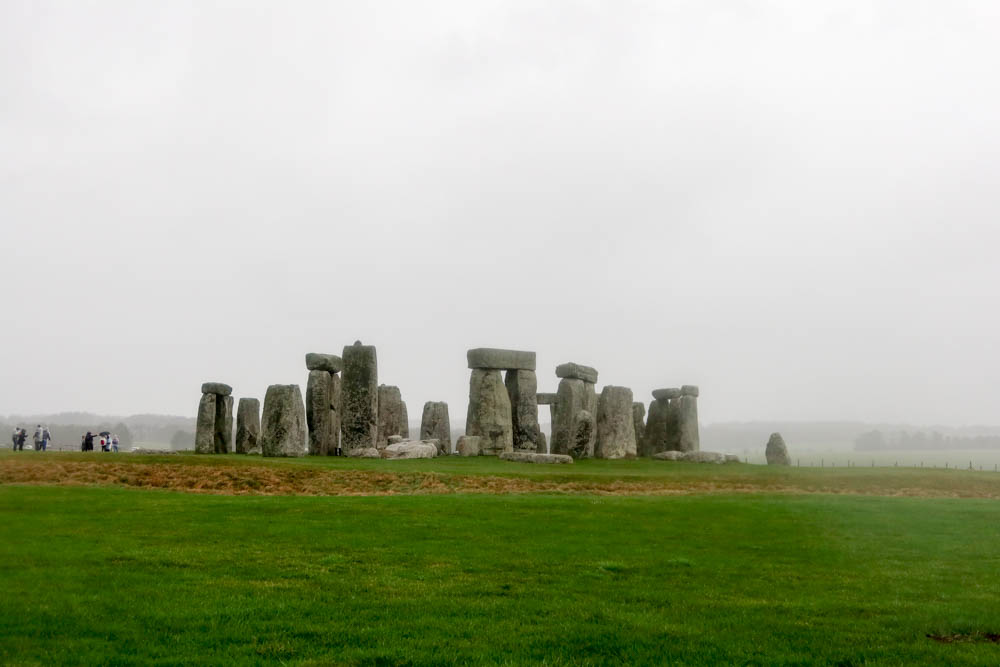
Again, this is open to interpretation!
Geoffrey of Monmouth, the 12th-century writer who put Tintagel Castle on the map by claiming King Arthur was born there, also claimed that Merlin the Wizard built Stonehenge.
Of course, Monmouth isn’t known for his historical accuracies!
In fact, Stonehenge older than the people who inspired Merlin by a few thousand years.
In the 17th century, John Aubery, a famous archaeologist, claimed that Stonehenge was an ancient Druid stone circle. Again, modern technological advances proved that the stones predate the Celtic society, which Druids were a part of.
Despite this, people who identify as Druids today still spend summer solstice at Stonehenge each year.
Nowadays, it’s most commonly thought that several groups of people contributed to the construction of Stonehenge.
Firstly, Neolithic agrarians started to build Stonehenge, and then other historic groups contributed. The original builders may have been Neolithic ancestors of the later groups.
Why was Stonehenge built on Salisbury Plain?
The biggest mystery of all is why was Stonehenge built on Salisbury Plain, 120 miles from where the rocks were found?
Bear in mind that this was before wheels were commonplace in the UK, and 120 miles of lugging huge rocks was quite the journey!
Nobody really knows. Lots of interesting artefacts have been discovered on the plain, and it was obviously an important site to Neolithic people, but there’s no way of being certain.
You can read more about it in the Stonehenge museum though!
Where is Stonehenge?
Stonehenge is situated in the middle of Salisbury Plain, not far from the city of Salisbury in Wiltshire, South West England.
The A303 road goes right past the stones, and you can actually see them from the road (there’s always a traffic jam here!).

How to get to Stonehenge
Here are some tips for getting to Stonehenge from different cities!
How do you get to Stonehenge from London?
You can get to Stonehenge from London fairly easily.
Driving Directions
If you’re driving, head to the M25 and take junction 10 for the M3.
Travel down the M3 and then take the A303 westbound.
Keep following the A303, and you’ll eventually reach the Stonehenge World Heritage Site and see the stones on your right.
At the next roundabout, turn right to reach the car park.
Public Transport Directions
If you’re taking public transport, head to Waterloo Station where you can jump on a train to Salisbury. This takes about an hour and 25 minutes.
From Salisbury Station, you can take the Stonehenge Tour Bus to the site.
Tour to Stonehenge
There are quite a few tours available from London.
I have used and recommend Golden Tours, which offers a Simply Stonehenge Tour (just going to Stonehenge), a Windsor Castle, Stonehenge and Bath tour, or a Windsor Castle, Oxford and Stonehenge Tour.
You can see all of their tours here.
How to visit Stonehenge from Bath
Bath isn’t too far from Stonehenge – less than an hour’s driving via Warminster.
You can also take the train from Bath Spa to Salisbury (around an hour) and then take the bus.
How to visit Stonehenge from Salisbury
From Salisbury, the journey is simple! Just take the Stonehenge Tour Bus from the train station. It is about half an hour.
How to visit Stonehenge from Bristol
There is a direct train from Bristol Temple Meads to Salisbury (about an hour and ten minutes). From there, you can transfer to the Stonehenge Tour Bus.
Visiting Stonehenge
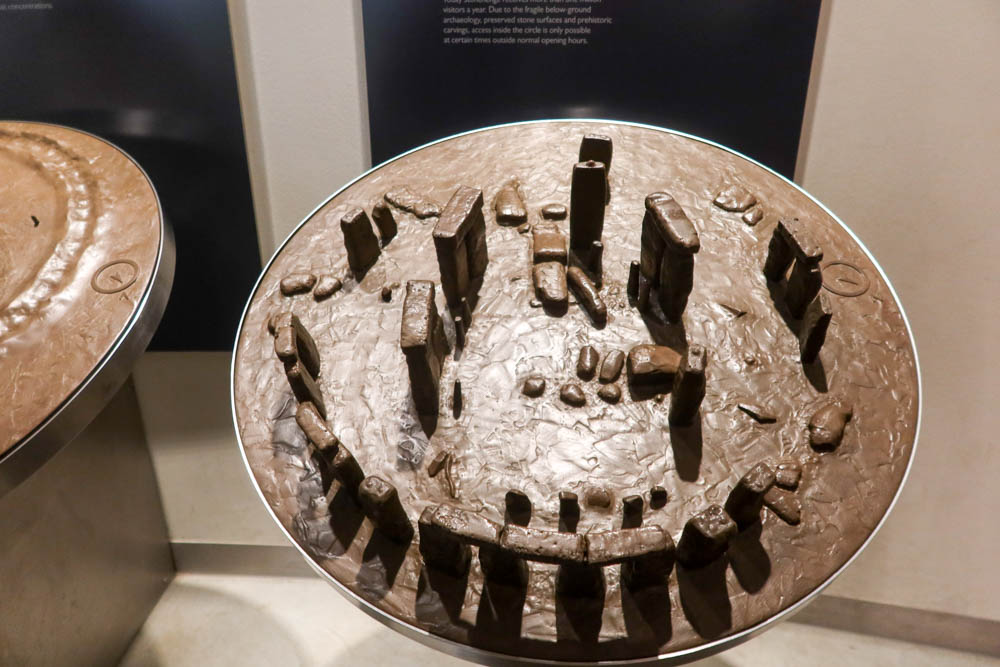
Once you have reached the car park, enter the Stonehenge visitor centre to purchase tickets.
The only toilet facilities are in the visitor centre, so make sure that you use them before going to the stones.
How much are tickets to Stonehenge?
Let’s address the elephant in the room. Stonehenge is one of the most expensive attractions in the UK.
At the time of writing, it is £21.50 for adults and £12.90 for children.
It’s costly, especially if there is a group of you.
You can reserve your tickets here.
However, there are a few hacks that I’ll go into later in this post to get cheaper or free entry!
Do I need to book tickets in advance?
Book in advance if you’re visiting during the summer or on a weekend or school holiday. It’s a timed ticket, and you’ll get a 30-minute time slot to enter after your chosen time.
You can book up to three months in advance.
You can book tickets using this link.
How close to the stones do you get?

You can’t get right up to the stones or climb on them.
But you can walk around a walkway where you can see the stones from different angles. You get fairly close, but not so close you can touch them!
What is the best time to visit Stonehenge?
Stonehenge is open from 9:30 am to 5:00 pm in the winter months and until 6:00 pm in the summer months.
The best time to visit is probably first thing in the morning or in the late afternoon – all the tour buses get there at around 11:00 am and their busiest time is from 11:00 am to 2:00 pm.
I’d also recommend visiting on a dry, wind-free day. You’re on a plain with no shelter, after all!
The last time myself and my parter visited, it was a damp, windy day and our Stonehenge experience looked like this.

Luckily, I’ve visited the monument dozens of times before!
How to get to the stones

It’s worth mentioning that the stones aren’t right by the information centre.
To reach them, you need to either walk for half an hour through the plain or take a five-minute shuttle bus ride from the Stonehenge Visitor Centre.
Don’t worry, the buses are free – just make sure that you keep your ticket safe to show them!
How long do I need at Stonehenge?
Two hours is plenty of time to see the museum and the stones, walking one way and taking the bus the other. If you get the bus both ways, you may only need 60-90 minutes.
The cost of Stonehenge
As I mentioned, Stonehenge is quite pricey! Let’s break the cost down a little.
What is included in the entry fee?
In the ticket price, you get:
- access to the stone site
- access to the museum where you can learn more about the stones
- the chance to see Neolithic houses outside the museum
- QR codes to scan and listen to an audio guide
- shuttle bus transfers to and from the stone

How to visit Stonehenge for free
There are a couple of ways to visit Stonehenge for free.
The stones actually sit on public land, run by the National Trust.
The site is private and you need a ticket to enter it. However, you can walk on public footpaths basically right by the site and get a very similar view to paying customers.
You can park on the side of the road at Fargo Road and follow a public footpath there.
Once you reach the area where bus tours are dropped off, you can turn down a permissive footpath to walk alongside the stones.
Obviously, it is a bit of a hassle to leave the car and walk (it’s about 15 minutes and you could get lost!), but it is perfectly legal and a good way to see the stones for free.
Another perk is that you can visit at any time. Stonehenge looks best an hour after sunrise and an hour before sunset when the English Heritage centre is typically not open!
English Heritage Membership

Another way to visit Stonehenge for free (well, kind of) is by simply buying an English Heritage membership.
You’ll pay around £60 for every single English Heritage attraction for an entire year (sometimes longer, as they often have deals).
Plus, English Heritage members get free parking and free entry for kids. If you’re an adult visiting with two children, you have more or less made your money back by just visiting Stonehenge!
I’m an English Heritage member and I love it. You can see my full review of English Heritage membership here.
Or, take a look at the English Heritage website to read more about it!
Get a National Trust membership
National Trust members don’t usually get free entry to English Heritage attractions, but there’s an exception for Stonehenge because it’s on National Trust land.
If you’re a National Trust member, you can also enjoy free entry to hundreds of stately homes and castles that they own.
I’m also a National Trust member (I can’t choose between the two!). You can read my National Trust membership review here.
Or, read my National Trust vs English Heritage membership post if you want to decide which one to opt for!
Visit for Summer Solstice
Because of Stonehenge’s potential Druid and astronomical connections, thousands of people gather every year for free during the summer solstice.
Entry is free on 20th June, and you can wait for sunrise on the 21st – the earliest it will be in the year.
You can even climb on the stones!

Is Stonehenge worth visiting?
If you’re interested in archaeology travel or ancient history, Stonehenge is definitely worth the visit!
It’s also a must-do bucket list activity in England. While it is expensive, seeing the stone circle, which dates back five thousand years, is an incredible feat.
Whether you’re British or an international tourist, you’ll be wowed at this attraction – it’s one of a kind!
My main tip would be to get an English Heritage or National Trust membership before visiting the stones.
You can become a member of English Heritage through their website. Click here to read more!

